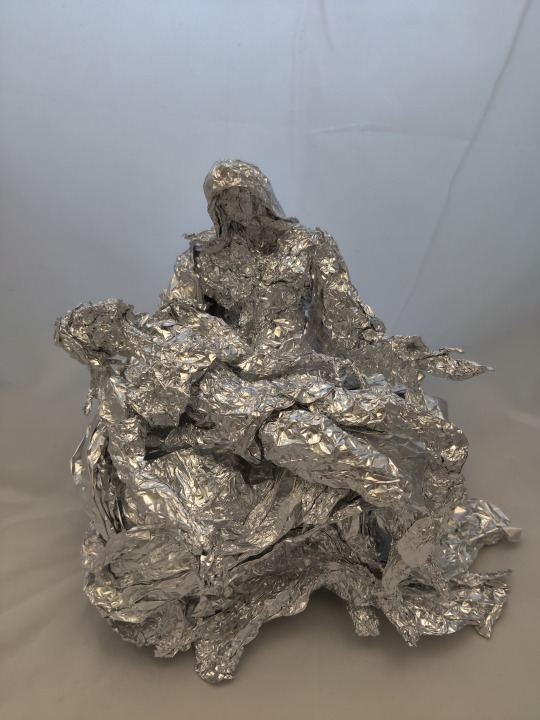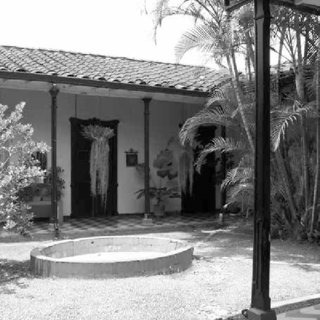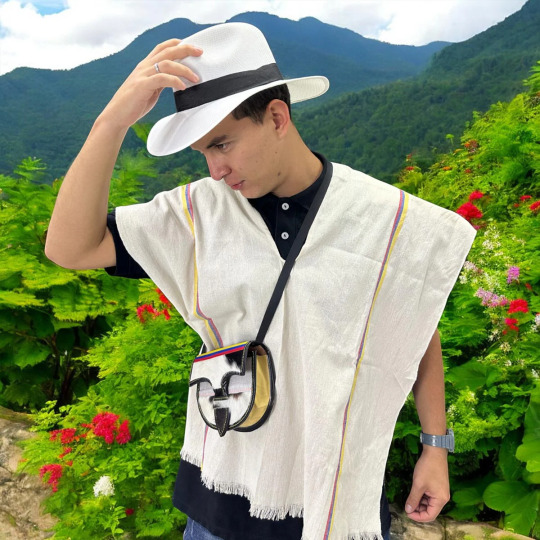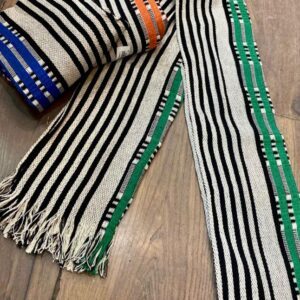#Traditions of Judaism
Explore tagged Tumblr posts
Text

Pieta by Michelangelo - Aluminum Foil Sculpture
#pieta#michelangelo#renissance#traditional art#classic art#virgin mary#jesus of nazareth#jesus christ#religion#christianity#judaism#hebrew#roman catholic#catholic
7K notes
·
View notes
Text
When I was in school I went to a friend's house to work on a project on a Friday afternoon. At about 6 or 6:30 when the sun was about to set her mom called us over to the livingroom. She lit two candles with my friend and then they proceeded to put the lit candles inside of a little cupboard so no one could see them. Me, a young jewish teenager asked her, my catholic friend, why they did that and she shrugged, said it was a family tradition to bring peace and prosperity, that the women of the family did it every friday evening and then hid the candles. They were very catholic, so I bit my tongue and we went back to her room to study.
This is just one of many, many, crypto jewish traditions that still exist in my hometown of Medellín, Colombia and I want to share a little bit about them with you.
Medellín is the capital city of a region called Antioquia and it is currently the second biggest city in my country. Now the weird thing about my region and my city more specifically is that it is in the middle of fucking nowhere, like we are in a valley in the middle of the andean mountains and it would take over two weeks by river, horse and river, and dunkey and mule to even get here before the invention of cars or trains.
Now Medellín was founded over 400 years ago, and families had been coming to the region for way before then, so that means that for centuries getting to my city from the sea or from the other big cities in the country was incredibly hard. This was by design, because Medellín itself was founded by about 28 families and we know for a fact that alteast half of them were crypto jews hidding from the Spanish Inquisition, and both before and the foundation more and more jewish families arrived to the region.
This is a known fact, the DNA of the people from the region has a lot of sepharadic jewish mixed in there. Early Colombian literature dating up to the 1845 would call the people of my region the Neogranadine Jews or the Colombian Jews. But because they were crypto jews the religion and most of the traditions were lost during the 400 years that have passed, now over 90% of the population is catholic and don't really know about their origins.
But some things stuck. And I want to tell you about them.
On the 7th night of December there is this pre-christmas festival called "El día de las velitas" or the little candle night that started and was unique to Antioquia. It's supposed to commemorate the candles that people had in the streets and the windows on the night Jesus was born and that helped Mary and Joseph to find their way. Do you know how this unique festival is celebrated in my city? People take to the streets to light candles, small colorful candles that they put in wooden planks or directly on the streets, it's the night that people decorate and turn on the christmas lights and it is so important and popular that we have an actual day off on the 8th of december.
Let me show you a few pictures



I don't think I need to explain this one. Even most goyim will know about Hannukah. But it is the weirdest thing when the dates coincide and we are all lighting candles together.
My dad was in the Jewish community board and we needed to rent a place to put our jewish daycare. They found this beautiful old house that had belonged to a family in colonial times but needed a little TLC. We had them remove some wooden floors because they were too old and rotting and found a huge Magen David made out stones in the center of the floor. The house also happened to have two separate kitchens and a mikveh or immersion bath in one of the rooms. These a very traditional things that colonial houses have in my region.
My grandmother converted to Judaism so I have a side from my family that is 100% from here and didn't arrive during the 20th century. I had the pleasure to meet both of my great grandparents from that side though they died when I was young. My grandma tells me that my greatgrandmother used to have one of these immersion baths in her house when she was growing up. Women were supposed to bathe in them after their periods had ended, my catholic great grandmother respected the mikveh traddition more than I ever have.
(I wish I had photos from that specific house but this happened over ten years ago, I'll show you some immersion baths from a different colonial houses that are also in my city)



Now how about we talk about traditional clothes. I'm sure most of you have heard of Ponchos, which are traditional in the Andean region, well the one from Antioquia is a little different and it's always supposed to be worn with a hat. Let's see if you can spot what I mean.




A few years ago Spain decided to grant citizenship to the descendants of the Jewish people that they had exiled in 1492. To get it you had to prove through family trees that your family had been Jewish. My city got the most ammount of passports out of everyone in the world, more than Israel. I could have applied from both my family that came from Egypt in the 20th century (we still have the keys to our house in Spain) or through my catholic side, as both of my grandmother's last names applied. I didn't but I could have.
I don't really know why I decided to finally write this post. I have so many more stories. I just think it's both incredibly sad that so much Jewish culture and people were lost but also it's a little heartwarming to see what survived even centuries down the line.
#it took me years to decide to finally write this because i didn't want to put where i live out on the internet#but fuck it#i still don't know how i feel about this#it's a bit of mourning what could've been and a bit of look a this isn't it neat#there is so much more to say about this topic but the post is too long#like how a lot of jews changed their last name to “Rojas” which spelled backwards means “lizcor” or to remember and they still forgot#or how there is a movement of reclaiming the jewish roots we have three re-emerging jewish communities in our city#one of which already converted fully and they are WAY more obvservant than my regular traditional community#crypto jews#conversos#jumblr#jewish#jews#judaism#jewish history#colombia#medellin#lationamerica#latin america#south america
723 notes
·
View notes
Text
Ok so i am late by like a month, i have been busy and STILL didn't finish my native jewish miku but fuck it here's indigenous, native israeli miku with a little of my touch and a small analysis:

The clothes:
The dress is double layered and based on biblical description i saw of the clothes ancient jews wore i added yellow hoops at the end of the dress to represent the color of our oppression- yellow belts under the muslim rule and yellow stars in the holocaust

The embroidery:
The Rikma(embroidery) is a personal project i am working on for the past 3 months. The embroidery that WAS practiced on the land eventually was allowed only to muslims and arabs, jews in ottoman syria/palestine were so oppressed and poor they didn't have access to threads and around 1800's some rabbis discoraged jews being involved in arab activity, not only that the jews has completely disconnected themselves from most of the arab culture after the spread of zionism to the land as a form of building their own identity. And if there were jews involved in embroidery it is unknown bc all the photos i see are labeled as "palestinian woman" with no explanation if it is a christian, muslim or jewish.
My project consists of making patterns and motifs based on jewish history, symbols, traditions, land etc and i try to make it original, unique and as diverse from the tatreez as possible to avoid conflict. If any of you want i can explain in a different analysis on what each pattern represents.
The jewelry:
I genuinely suck at drawing gold and jewelry and tried my best to adorn her with as much jewelry as i can. The side piece(that can barely be seen) is also a pattern i came up with, i call it "amulet"

(ps. I forgot to make her a normal necklace, wanted to make it with a hamsa)
Henna:
Henna is still practiced by jews, mainly sefardic and mizrahi jews + ashkenazi jews who grow up and participate in mizrahi culture. The henna on the hands is based on patterns i saw some jewish artists made (on google unfortunately it didn't have names) which has the star of david on it and on the legs i made a mix of bukharan and yemeni jewish henna.
So here it is. A native, indigenous jewish/judean/israeli(te) miku. I tried my best✨
#miku hatsune#hatsune miku#artist on tumblr#israel#Ancient israel#Ancient judea#Judea#Jewish#jumbler#am israel hai#ישראבלר#jews#Jewish history#Jewish culture#Jewish embroidery#Rikma#Jewish symbols#Judaism#עם ישראל חי#מיקו#israeli miku#Jewish miku#Art#Procreate#טמבלר ישראלי#יהדות#jewish traditions#Indigenous#Native
1K notes
·
View notes
Text
It’s a bittersweet feeling that I have very few generational Jewish items. No mezuzahs, Shabbat candle holders, Hanukkiahs, or sedar plates. The only items I have are a beautiful magnifying glass with a Star of David on it, a pottery sign that spells ‘shalom’ made by my grandma, and a blessing sign that was gifted to her by her grandma. All three I deeply cherish.
However, I love that the responsibility lies on me. I have a small dreidel and menorah collection now. I have two mezuzahs. Shabbat and yahrzeit holders. Several books. Little tchotchke bowls. Jewelry and artwork. An assortment of every holiday card I come across at the store. I kept it going when it could have been forgotten with my grandma’s passing. My family may not be with me physically anymore, but spiritually I always have my minyan
#if nobody got me Judaism does#jumblr#now I’m just thinking about how those items are fitting#because my love has never been a connection to God but to my family#to keep their traditions#their memories#the way they raised me alive
207 notes
·
View notes
Text
Two Plates, Three Jews
One night, my friend Josh was insisting that keeping kosher cutlery and dishware is actually a very easy task. Our other friend Hao and I were nodding along until he exclaimed “This is why you only have two plates!”
“Two plates?” I clarified, distracted from the task of subtly trying to pick out a hair from my hand. Hao sat up from where I’d stacked pillows from him, sending them all to the ground. “Like you only have two plates?”
“Uh, yeah,” Josh shook his head like I was stupid. (And to be honest I am but for reasons separate from this conversation. ) “Two plates. Two forks. Two knives. That’s all you need for your life.”
Hao and I stared at each other. We shared a look encompassing what I can only describe as complete horror, comprehension, and the tiny feeling of being a bit impressed.
Josh pointed to the two cupboards in his tiny student kitchen, side by side. “That’s my dairy one,” He pointed to the left. “That’s my meat one,”
“Ha, ha.” Hao said, still a bit horrified. “Your meat”
We approached the cabinets tentatively. I can’t describe to you how hilarious it is to open them side by side and just in each of them, see a singular plate, fork and knife sitting forlorn like lonely soldiers.
“I really, really” Josh insisted as we turned to stare at him in wonder. “Don’t see what the big deal is.”
#fromgoy2joy thoughts#jumblr#jewish#jewblr#jewish convert#jewish tumblr#jewish conversion#jewish humor#kosher food#kosher#jewish joy#jewish tradition#jewish stuff#judaism stuff#judaism#jewishness
930 notes
·
View notes
Text

A Jewish bride from the city of Salé in Northwestern Morocco (1935)
#photography#vintage photography#vintage photo#vintage photos#retro aesthetic#jewish#jewish bride#bridal wear#jews#judaism#✡️#🇲🇦#morocco#north african#moroccan#indigenous#arab#amazigh#african#sephardic#mizrahi#moroccan jews#history#beautiful#traditional costume#traditional clothes#1930s#old photo
214 notes
·
View notes
Text

#jews on tumblr#jewish life#jewblr#jews of tumblr#jewish tradition#jews#jewish mythology#jew#jewish history#jewish heritage#jewish#dogma#judaism#israel 🇮🇱#israel#jumblr#judaic#jew converts#jew in progress#dogma lilith#dogmalilith#jewish authors#art
206 notes
·
View notes
Text
In this zine we present you the jewish symbols of the famous SchUM cities - Speyer, Worms and Mainz. They were important jewish communities from the High Middle Ages, and SchUM is the acronym made up of the first letters of the hebrew names of the cities.
The symbols were taken from tombstones, synagogue ornamentations, floor tiles and even from a mikveh. We used linocut prints for creating the zine, where along with the symbols you can read about its meaning and a bit of history about their place of origin and the communities.
The importance of the SchUM cities that they were significant centers of ashkenazi judaism, showcasing early, well-preserved jewish community life, architectural innovation and scholarship. These communities considered as a cradle for ashkenazic judaism, many customs and regulations existing still today actually came from the communities that lived here.
#jewish#jumblr#art#judaism#cemetery#illustration#hebrew#zine#print#germany#schum#speyer#worms#mainz#tradition#jewish tradition#jewish religion#symbolism#symbol#motifs#ornament#middle age#medieval
375 notes
·
View notes
Text

Holidays: Chanukah (Hanukkah)
The darkness of the whole world cannot swallow the glowing of a candle.
#chanukah#hanukkah#jewish holidays#jewish history#december holiday#jewish#judaism#Eight nights of Chanukah#festival of lights#Robert Altinger#kislev#menorah#sufganiyot#latkes#dreidels#holidays#holiday aesthetic#Holiday moodboard#jewish culture#jewish heritage#jewish tradition#jewish spirituality#cultures#Culture aesthetic#100 notes#300 notes
380 notes
·
View notes
Text
it's time to attend jumblr shul!
#this should be interesting lol#shul#synagogue#jumblr#polls#judaism#jewish culture#rabbi#my father and grandfather and great grandfather were all baal koreh#so im continuing the family tradition
283 notes
·
View notes
Text
So I’ve been celebrating Shabbat for a few months (it’s unbelievably amazing btw, I rest, light candles, I limp through Hebrew but I can feel it getting easier to say and understand, have wine, feel like a winner because no one has killed me this week.) but I don’t always want/make bread. I love bread, I love making it, having bread all week, and braiding it but my husband can’t eat it so one loaf is a lot of bread. But I sometimes wonder if challah is the only option. Putting eggs, honey, and butter in a bread reads as a kind of cake to me. It also makes sense to me that cake is fitting for celebration and contemplation about the good in life.
My question is: does jumblr know if I can make babka or rugula instead for Shabbat? Can I make gluten free cookies as long as it has over 1/8th oat flour? Maybe even Cinnamon buns fit a lot of the same ingredients as challah? Not to get all rabbinical, but does the Hebrew for what bread you have on Shabbat specify bread as opposed to cakes (which I don’t think was a separate category of food from bread 3000 years ago? The internet says challah started in 15th century Eastern Europe.
The truth is I’m not following a lot of rules for Shabbat anyway, although I try to get close each Friday. I want it to be Jewish, not just a jew making a type of Shabbat type thing on Fridays. so is this: “in for a penny in for a pound” challah is traditional, it must be bread not cake, or is it: as long as you usually do challah you can make cake and treats every once in a while?
#jumblr#shabbat#I’m so sorry Jews in progress#I know it’s probably annoying to see a Jew who doesn’t have as strong a foundation as you#the 1940s athiest USSR communist phase that a lot of American Jewish people hit my family tradition hard.#israeli#judaism
116 notes
·
View notes
Text
I don’t know how to go about making my Hebrew name official since I was raised in an interfaith household that was mostly Catholic (so I had First Communion & Baptism; I wish I had been given the option to do that or to follow Jewish tradition) and so wasn’t given a Hebrew name nor had a bat mitzvah when I was 13.
#judaism#hebrew names#my hebrew name#groovy-lady’s hebrew name dilemma#jumblr#jewblr#jewish#jewish tradition
27 notes
·
View notes
Text

Drew some different jewish outfits ^_^
#jumblr#judaism#pecharts#i based the frum one on a lady I saw at work#but the others are based on pictures of the traditional clothing#sorry if there are any inaccuracies i tried my best to base them on actual dresses#art#artists on tumblr#illustration
85 notes
·
View notes
Text
Look what Google just recommended to me!!!!
I already own (and love) Shabbat and Portico.
But I am OBSESSED with the rest and must acquire them immediately.
Top of my list is Love Japan because LOOK AT THIS BEAUITFUL BOWL OF MATZO BALL RAMEN!!!!!

We hear a lot about Jewish people in Europe and MENA, but we do not hear a lot about Jewish culture as it blends with East Asian cultures, and that’s a shame. Not just because it erases the centuries of Jewish populations there, but also because there are plenty of people of mixed decent. People who may not have come directly from Jewish communities in East Asia, but people who have a Japanese Father and a Jewish Mother, for example. Or people in intercultural marriages. These are all real and valuable members of the Jewish community, and we should be celebrating them more. This cookbook focuses on Jewish Japanese American cuisine and I am delighted to learn more as soon as possible. The people who wrote this book run the restaurant Shalom Japan, which is the most adorable name I’ve ever heard. Everything about this book excites and delights me.
And of course, after that, I’m most interested in “Kugels and Collards” (as if you had any doubts about that after the #kugel discourse, if you were following me then).

This is actually written in conjunction with an organization of the same name devoted to preserving the food and culture of Jews in South Carolina!
I’m especially excited to read this one, because I have recently acquired the book Kosher Soul by the fantastic, inimitable Michael J. Twitty, which famously explores faith and food in African American Jewish culture. I’m excited to see how Jewish soul food and traditions in South Carolina specifically compare and contrast with Twitty’s writings.
I’m also excited for all the other books on this list!
A while ago, someone inboxed me privately to ask what I recommended for people to read in order to learn more about Jewish culture. I wrote out a long list of historical resources attempting to cover all the intricate details and historic pressure points that molded Jewish culture into what it is today. After a while I wrote back a second message that was much shorter. I said:
Actually, no. Scratch everything I just said. Read that other stuff if you want to know Jewish history.
But if you want to know Jewish culture? Cookbooks.
Read every Jewish cookbook you can find.
Even if you don’t cook, Jewish cookbooks contain our culture in a tangible form. They often explain not only the physical processes by which we make our meals, but also the culture and conditions that give rise to them. The food is often linked to specific times and places and events in diaspora. Or they explain the biblical root or the meaning behind the holidays associated with a given food.
I cannot speak for all Jews. No one can. But in my personal observation and experience—outside of actual religious tradition—food has often been the primary means of passing Jewish culture and history from generation to generation.
It is a way to commune with our ancestors. I made a recipe for chicken soup or stuffed cabbage and I know that my great grandmother and her own mother in their little Hungarian shtetl. I’ll never know the relatives of theirs who died in the Holocaust and I’ll never meet the cousins I should have had if they were allowed to live. But I can make the same food and know that their mother also made it for them. I have dishes I make that connect me to my lost ancestors in France and Mongolia and Russia and Latvia and Lithuania and, yes, Israel—where my relatives have lived continuously since the Roman occupation even after the expulsions. (They were Levites and Cohens and caretakers of synagogues and tradition and we have a pretty detailed family tree of their presence going back quite a long time. No idea how they managed to stay/hide for so long. That info is lost to history.)
I think there’s a strong tendency—aided by modern recipe bloggers—to view anything besides the actual recipe and procedures as fluff. There is an urge for many people to press “jump to recipe” and just start cooking. And I get that. We are all busy and when we want to make dinner we just want to make dinner.
But if your goal isn’t just to make dinner. If your goal is to actually develop an understanding of and empathy for Jewish people and our culture, then that’s my advice:
Read cookbooks.
#Judaism son#Jewish culture#Jewish cuisine#culinary tradition#culinary history#foodways#cultural preservation#tangible culture#jumblr#Judaism#food#cuisine#kugel discourse#Jewish joy#jewish positivity#Jews around the world#East Asian Jews
164 notes
·
View notes
Text
#chanukah#hanukkah#hanukah#chanukkah#by traditional i mean#not a n original by someone like maccabeats or six13#jumblr#jewish#judaism#polls
198 notes
·
View notes
Text
I’m studying for my nutrition final and I’m coming across so many things that feel very familiar to me.
I know that the restrictions are not explainable, that it’s a command we listen to because Hashem told us, that it’s a matter of respect, ETC..
However, fun fact- eating meat and dairy together may exacerbate IBS. And there are many more facts like this that line up with kosher laws, tummy problems, and general health.
I personally choose to believe G-D was really looking out for us-
“oh? The other nations? Yeah they’re fine. They have my full go-ahead to create culinary abominations. You guys specifically though-“
#jumblr#jewish#jewblr#jewish tumblr#Judaism#kosher#Jewish humor#jewishness#jewish tradition#kosher food
72 notes
·
View notes